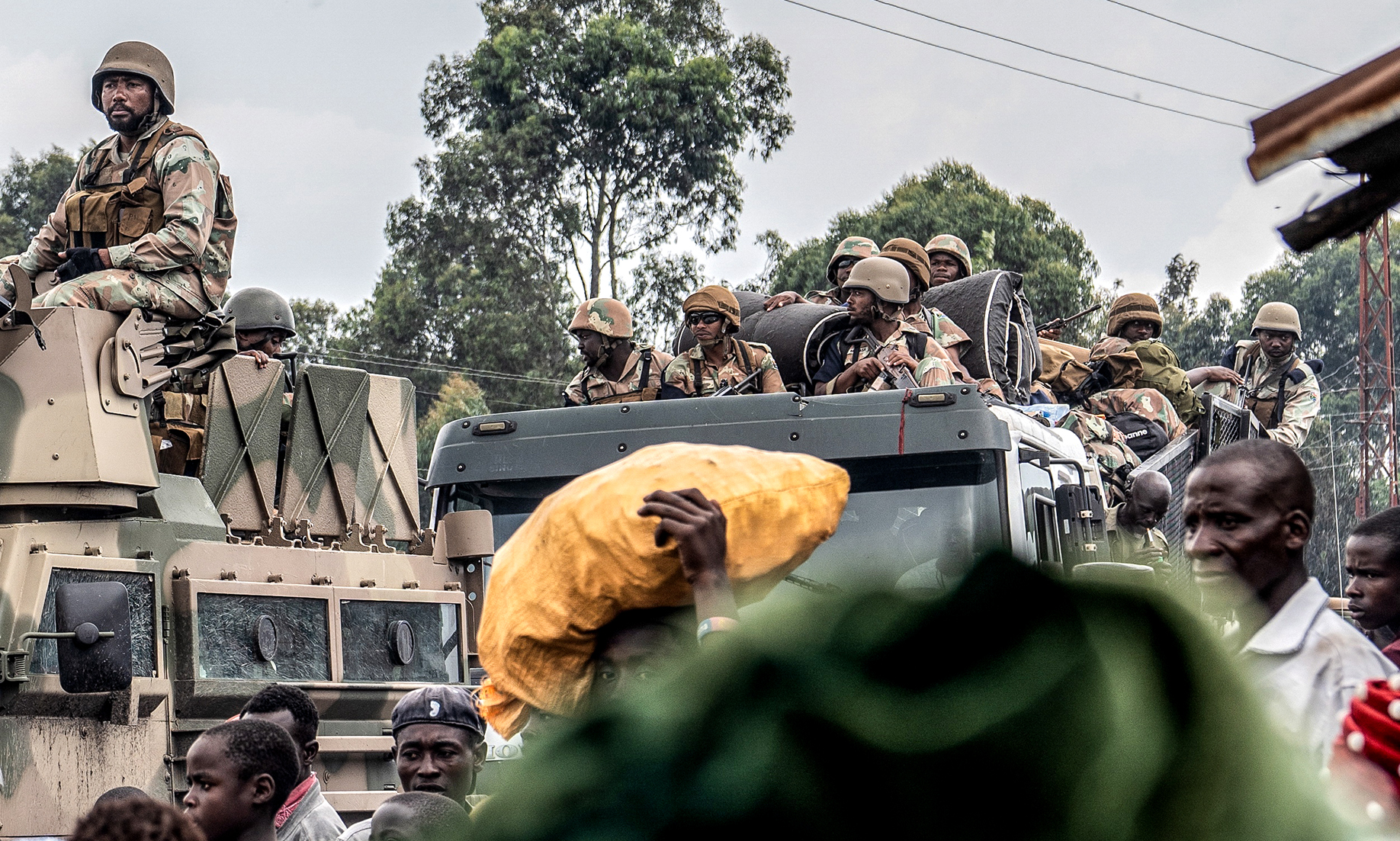Two more South African soldiers have been killed in battle in the eastern Democratic Republic of the Congo (DRC), raising critical questions about the wisdom and combat readiness of the mission.
The SA National Defence Force (SANDF) confirmed that two of its soldiers were killed and 20 injured, four critically, in a mortar attack on their base in Sake on Tuesday.
The four critically injured soldiers were hospitalised and the other injured soldiers were treated and discharged.
This attack, presumed to have been launched by M23 rebels, brought to five the death toll, in three attacks, of SANDF soldiers deployed since mid-December in the South African Development Community Mission in DRC (SAMIDRC). More than 30 SANDF soldiers have been wounded.
Their mission is to defeat armed rebel groups, but it is clear their main target is the M23 group of ethnic Tutsis, which is heavily armed and otherwise supported by Rwanda.
Military observers confirmed a Defenceweb report that a captain from 46 Brigade headquarters and a captain from the Air Defence Artillery Formation were the two soldiers killed in the attack.
They confirmed a Business Day report that one of the two captains died immediately while the other died after waiting for a long time for an ambulance to arrive after the mortar attack.
They said the wounded soldiers were being treated at a public hospital in Goma as the SAMIDRC has only operational medics and no advanced field hospitals with doctors.
Pikkie Greeff, the national secretary of the SANDF Union, told Daily Maverick: “From the union’s point of view it’s become blatantly clear that certain elements of support are severely lacking.
“Air support and capability (medically, logistically and combat-speaking) is the crucial missing cog. Certain radar defence systems are sorely needed. Losing troops in combat is always bad but losing troops due to inadequate resources is unacceptable.”
Asked for comment on this point, SANDF spokesperson Siphiwe Dlamini said: “My information is that the second member died in hospital. Now, whether that can be attributed to the claim of a delay in an ambulance which is based in Sake, the frontline, where this incident happened, I do not know.”
Rising death toll
Defenceweb quoted unverified sources as reporting at least two M23 mortar attacks on SANDF and Congolese Army (FARDC) positions in Sake on Tuesday, one in the morning and another in the evening.
It said that according to local reports, FARDC and Wazalendo militia repelled the attacks after fierce fighting. Sake is some 20km northwest of Goma, the capital of North Kivu province.
On 30 May, one SANDF soldier was killed and about 14 injured in a clash with M23 at Sake and SANDF armoured personnel carriers were damaged or captured. One soldier in Tanzania’s contingent in the SAMIDRC was also killed and seven were wounded, while about a dozen M23 rebels were killed, said Defenceweb.
In February, two SANDF soldiers were killed and three wounded in the first mortar attack on their base.
Military observers confirmed that the SANDF had now deployed its full contingent of about 2,600 troops in the SAMIDRC. The SANDF still has another contingent of about 1,000 troops deployed in eastern DRC as part of the Force Intervention Brigade (FIB) of the UN peacekeeping force Monusco. But they are due to be withdrawn this year.
The FIB has been deployed in eastern DRC since 2013 when it routed the M23. But the rebel group is now much stronger than it was then and Rwandan President Paul Kagame is not under the same Western pressure as he was back then to withdraw his support from the rebels. The UN has reported that large numbers of Rwandan soldiers are in eastern DRC, actively supporting the M23.
Mounting questions
Commentators have questioned the wisdom of South African and SADC deployment of troops into the eastern DRC, which is proving to be costly in lives and money.
SADC leaders agreed to the SAMIDRC mission last year at the request of DRC President Félix Tshisekedi, who invoked SADC’s mutual defence commitments to seek help in countering Rwanda, which he accused of essentially invading his country by proxy.
But this month, DRC expert Stephanie Wolters, a senior researcher at the SA Institute of International Affairs, said in a webinar: “It’s very difficult to get a handle on why South Africa has chosen to do this.”
Read more in Daily Maverick: Alphabet soup of competing armies and ‘peacekeepers’ complicates conflict in eastern DRC
She said South Africa essentially had to withdraw its forces from Mozambique, where they had been participating in the SADC Mission to Mozambique (Samim) which is fighting Islamist insurgents, because SA did not have the resources to fight in both theatres.
“And one could argue that what’s happening in Mozambique is a closer threat to South Africa — and to Tanzania for that matter,” added Wolters, referring also to the presence of Tanzanian troops in both the SAMIDRC and Samim.
“One thing that’s really missing from the South African approach that we would have liked to have seen is a greater engagement in a political solution.
“South Africa does have a special envoy [for DRC]. Former minister Jeff Radebe was appointed last year, but we don’t see a lot of activism coming from his office. So I think it would be useful if South Africa could get more politically engaged in trying to find a negotiated solution between the sides.”
Wolters said it was going to become increasingly difficult for South Africa to explain the major investment it was making in the SAMIDRC, in lives and money.
However, she said that since both the UN and the African Union had endorsed the mission it was possible that funding could come from them or the European Union. DM





